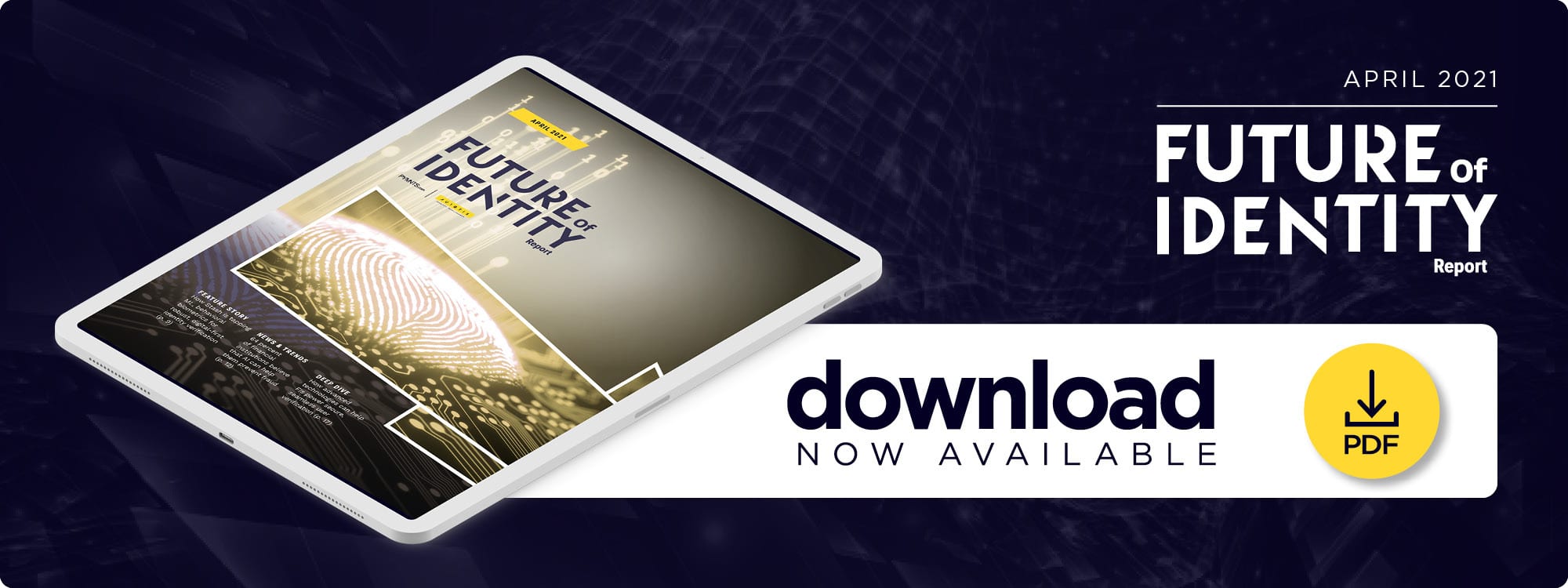Deep Dive: How Advanced Technologies Can Help FIs Power Secure, Seamless User Verification

Financial services have increasingly gone digital in recent years as financial institutions (FIs) and FinTechs have sought to meet customers’ growing demands for convenience and speed. Consumers’ widespread shifts to staying at home during the pandemic made remote financial services a practical necessity, with a survey from last year finding that 73 percent of U.S. adults were more likely to use digital banking and payments while social distancing.
Financial services providers taking this inevitable leap must strike a balance, however, between making these offerings simple for customers to onboard and keeping them safe from fraudsters and cybercriminals. Seamless, robust identity verification can be a challenge to achieve, but much is at stake: FIs that fail to detect fraudulent users and allow them to establish accounts may be opening the door to money laundering, terrorist financing and other crimes. Such activities take a significant toll, with one 2020 report estimating that $800 billion to $2 trillion is laundered worldwide in an average year. This has spurred more governments to pass initiatives mandating compliance with anti-money laundering (AML) efforts, placing FIs on the hook to provide robust ID measures to weed out fraudsters. Customers are also concerned about rising fraud. Seventy-six percent of Canadian consumers in a recent poll stated that the mortgage industry needs to do more to protect their data, for example, and 40 percent worry that fraudsters could steal their personal details and take out loans in their names.
These concerns are compelling, but complex and sluggish authentication processes that may misidentify legitimate users as fraudulent can cause FIs to lose business. A 2020 study found that 32 percent of United Kingdom-based consumers would give up on loan applications if the entire process could not be completed in one channel, for example. Customers who are asked to finish online applications by verifying their identities in apps or scanning and emailing information might decide to forsake lenders for competitors that offer more streamlined approaches. This Deep Dive examines how some financial services companies are fine-tuning their approaches with advanced technologies to ensure effective, accurate identity verification.
The Authentication Challenges Posed By AML Compliance
Onboarding time is a major challenge in AML compliance. Many customers want to be approved within 24 hours, and overly involved requests for personal information can prolong the process, leading to potential frustration and abandonment. Thus, collecting the right details swiftly is paramount, but many FIs struggle with this. Companies working with outdated systems may be requesting data that is both excessive and irrelevant, extending onboarding times for little benefit. Seventy-four percent of 126 FIs surveyed in Bangladesh, India and Sri Lanka, for example, reported poor data quality as one of their five greatest AML compliance challenges.
Rating customers on financial crime risk is another major hurdle in AML. FIs need to perform know your customer (KYC) checks both during onboarding and continually throughout the relationship, as analyzing customers’ transaction patterns can help ferret out fraudsters. This requires providers to access and make sense of a great deal of data, however, and the manual processes and more basic technology tools that many FIs still employ are unlikely to be able to keep up.
Another challenge is that some technologies are simply not accurate enough for the work involved, with 51 percent of surveyed FIs saying that their transaction monitoring tools produced too many false positives. Old-school rule-based systems monitor customer behaviors for certain activities typically correlated with fraud, prompting compliance teams to manually review any red flags. This static approach cannot always keep pace with the complexity and innovation of modern fraud schemes, however.
Leveraging Aging Advanced Technologies In AML Efforts
Advanced tools that automate verification, completing the process rapidly to preserve the customer experience, can be game changers for FIs seeking to comply with AML requirements. More and more financial services providers are looking to technologies like artificial intelligence (AI) and machine learning (ML) to detect and predict fraud in a manner that is precise, dynamic and seamless. Forty-five percent of the surveyed FIs in 2020 planned to implement AI and bots within the next two years to improve detection while lowering false positives, for example.
ML can analyze data faster than human workers, uncovering patterns that might otherwise be missed, whether indicating misbehavior or confirming the legitimacy of honest users. These systems refine their detection abilities as they review more data, so they evolve and become more precise over time.
The Biometrics Approach
Improving data analysis to tackle AML compliance is only half the battle, and data collection can be streamlined as well. Biometrics can quickly assess unique identifying details, but these methods do not have universal appeal: While roughly 60 percent of Americans would be willing to provide fingerprint scans for account security to their banks, only 43 percent of Canadians would say the same, according to recent research.
The specific biometric details being collected matter, moreover, with 68 percent of U.K. consumers willing to verify financial accounts using fingerprints but only 37 percent and 36 percent inclined to undergo iris and face scans, respectively. Voice-based biometrics are drawing attention from FIs such as Korean bank IBK, which reportedly uses the method to confirm identities of call-in customers within 15 seconds. The bank believes the method is particularly useful for verifying older customers who may have difficulty providing fingerprints on smartphones or using other types of authentication. FIs taking the biometrics approach will need to stay attuned to their specific customers’ views and choose their methods accordingly.
Retail banks, lenders and other financial services providers will always have to navigate tension between two key goals: smooth, swift customer access to their services and robust, regulatory-compliant identity verification measures. Innovative technologies with powerful analytic capabilities can enable providers to deliver more seamless security while giving customers the reassurance of strong fraud protection.
The Future Of Identity Verification In The Financial Sector
More consumers are expected to gravitate toward online channels for their banking and payment needs in the next few years, giving FIs a key opportunity to capture new customers. It is important, however, to recognize that many of banks’ long-used customer verification methods are no longer viable as the online banking world expands. One recent study found that 1.1 billion consumers worldwide lack traditional identity documents, including birth certificates and passports, which could bar them from opening bank accounts online.
Banks thus need to develop verification solutions that do not rely on such data to keep pace with the flood of consumers who wish to access financial platforms via digital and mobile channels. Consumer-facing identity verification measures such as biometrics, in addition to back-end AI and ML tools, are likely to play a key role in authenticating these consumers — and banks appear to recognize this.
Biometrics are becoming an integral part of identification solutions for businesses outside the banking sector as well, as the technology could eventually be used in governments’ efforts to create so-called national identities to protect against digital fraud. These national identities are unique electronic identifiers that can essentially replace the use of credentials such as driver’s licenses or social security numbers online. Approximately 70 percent of executives in a recent survey believed that having a digital national identity program would give lower-income users more opportunities to participate in online banking. These IDs can also be paired with biometric identifiers to create much more robust online profiles of individual users, helping firms distinguish them from fraudsters.
FIs can also tap automated technologies to help bolster their identification efforts, relying upon AI and ML tools to automatically parse identity indicators and other data for faster, clearer results. Seventy-seven percent of financial leaders predict that AI will be the most important technology for the banking space over the next few years, for example, and 66 percent of banking executives believe ML tools, blockchain solutions and the internet of things will play a significant role in the space.
It is important for FIs to consider how these emerging technologies can help them simultaneously enable seamless onboarding and login experiences for legitimate users while keeping fraudsters leveraging high-tech solutions at bay. Keeping up with shifting online identification developments will prove critical to helping FIs compete in digital banking, both now and in the future.

